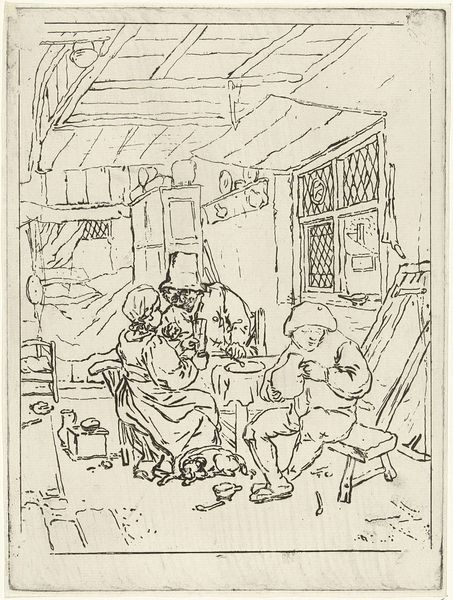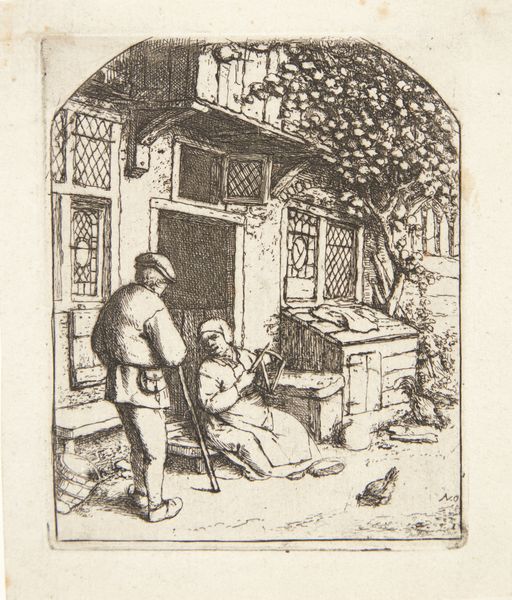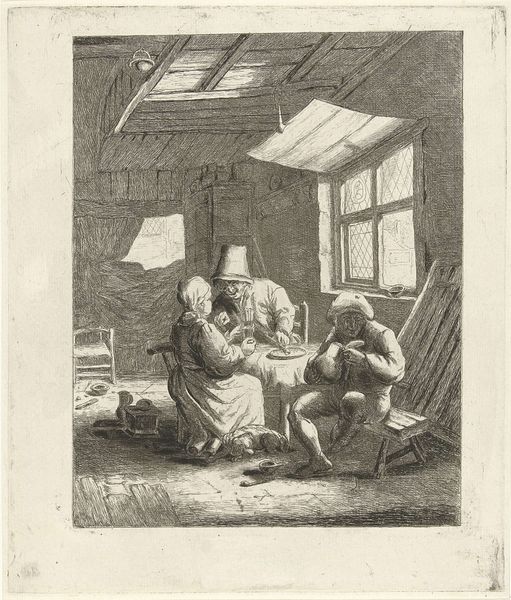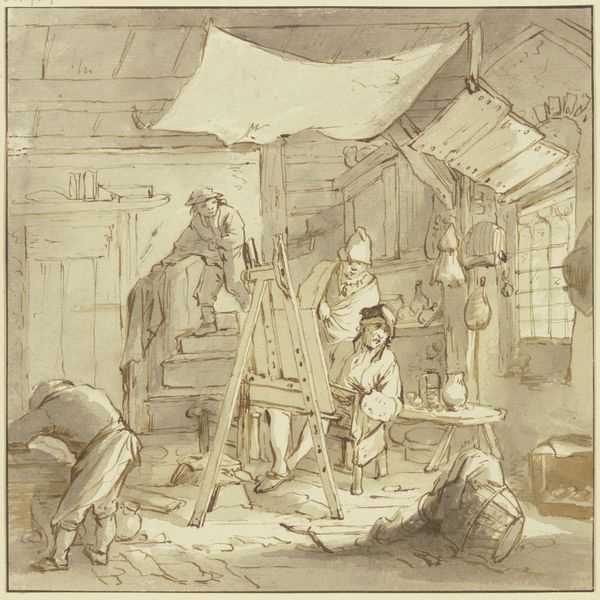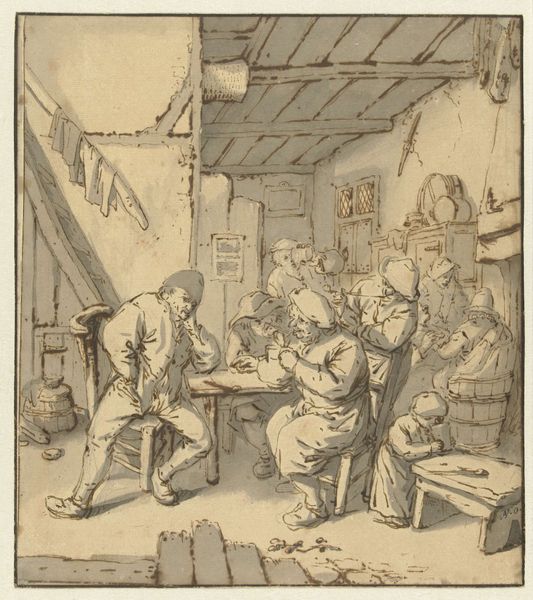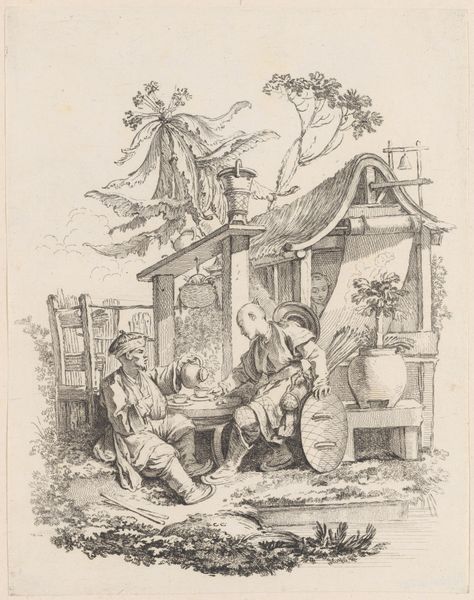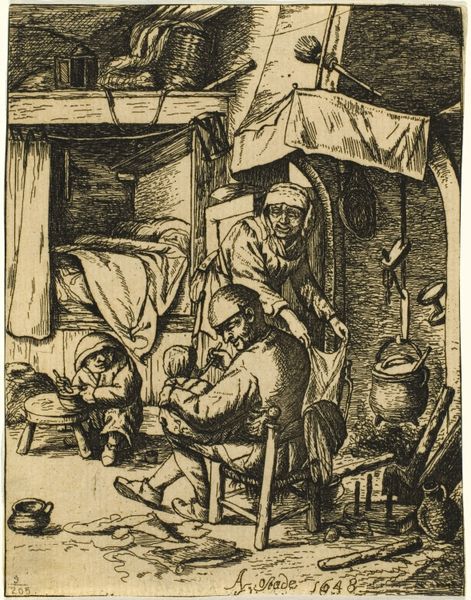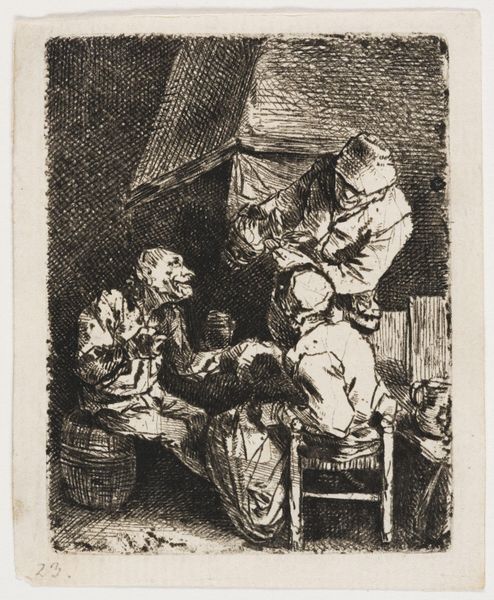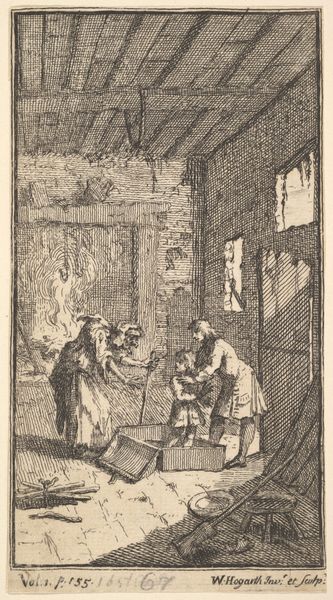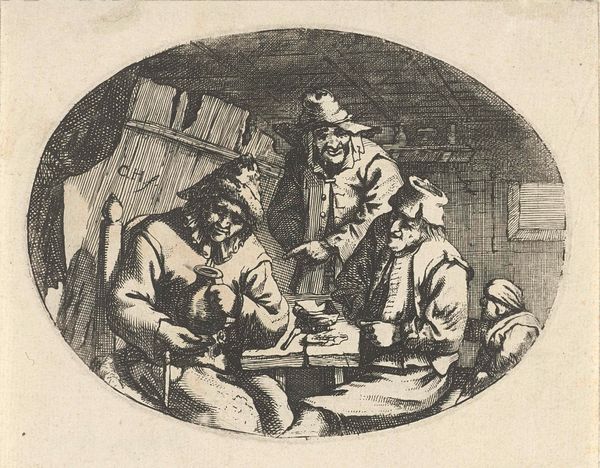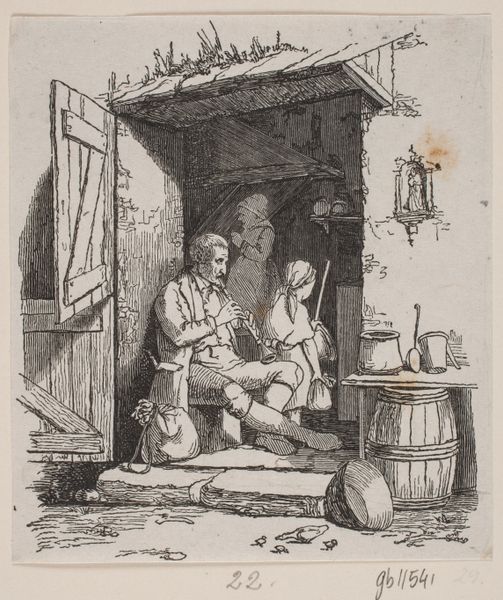
Dimensions: height 237 mm, width 177 mm
Copyright: Rijks Museum: Open Domain
Curator: Welcome! We're standing before Jabes Heenck's "Boereninterieur (tweede versie)," a genre scene drawing likely created between 1767 and 1782, rendered in ink. What's grabbing you first? Editor: It feels…intimate, like I've stumbled into a family gathering. There's a warmth, even though the lines are quite stark and simple. Almost cartoonish in a way, but charming. Curator: Interesting. Genre scenes, depicting everyday life, were gaining popularity then. They provided glimpses into the lives of ordinary people and could serve as moral lessons or social commentary. It's Baroque but in a very different form from the opulence we might normally associate with it. Editor: Absolutely! You see those lines? It’s all angles and edges but with so much energy. It’s like Heenck wasn't trying to be pretty; he just wanted to catch a moment. Like a visual diary entry. A dog under the table too, oh, I like that a lot! Curator: Precisely. Also, Heenck was part of a broader artistic environment where the boundaries between fine art and more popular, accessible imagery were blurring. Consider its historical positioning between eras. You've got elements hinting towards later Romanticism, too. Editor: That makes sense. I bet this drawing would have been more politically potent than we realize now, huh? Because in all of this Baroque high art we got these snippets of everyday people’s lives poking through. That's so fun. Curator: Definitely! And art always functions as an act of visual communication embedded in societal and cultural contexts. So in examining the life of peasants like in this sketch, Jabes Heenck, as an artist, opened some eyes, perhaps in a fashion similar to comic-book illustrators in later periods. Editor: I love the windows! A sheet is hung above, as if they need all the light they can get from outside. Such subtle moments, captured so gracefully by ink on the page. This has the touch of immediacy, a freshness that is truly wonderful. Curator: And for me, it's fascinating to see this "Boereninterieur (tweede versie)," which serves as a vital signpost to the evolution of art historical perspectives towards social representation and the narrative potential of domestic interiors. Thanks for sharing your impressions! Editor: Thanks for filling in all the backstory! Definitely seeing things a little bit differently now. Art always gets more interesting after a good conversation, doesn't it?
Comments
No comments
Be the first to comment and join the conversation on the ultimate creative platform.
